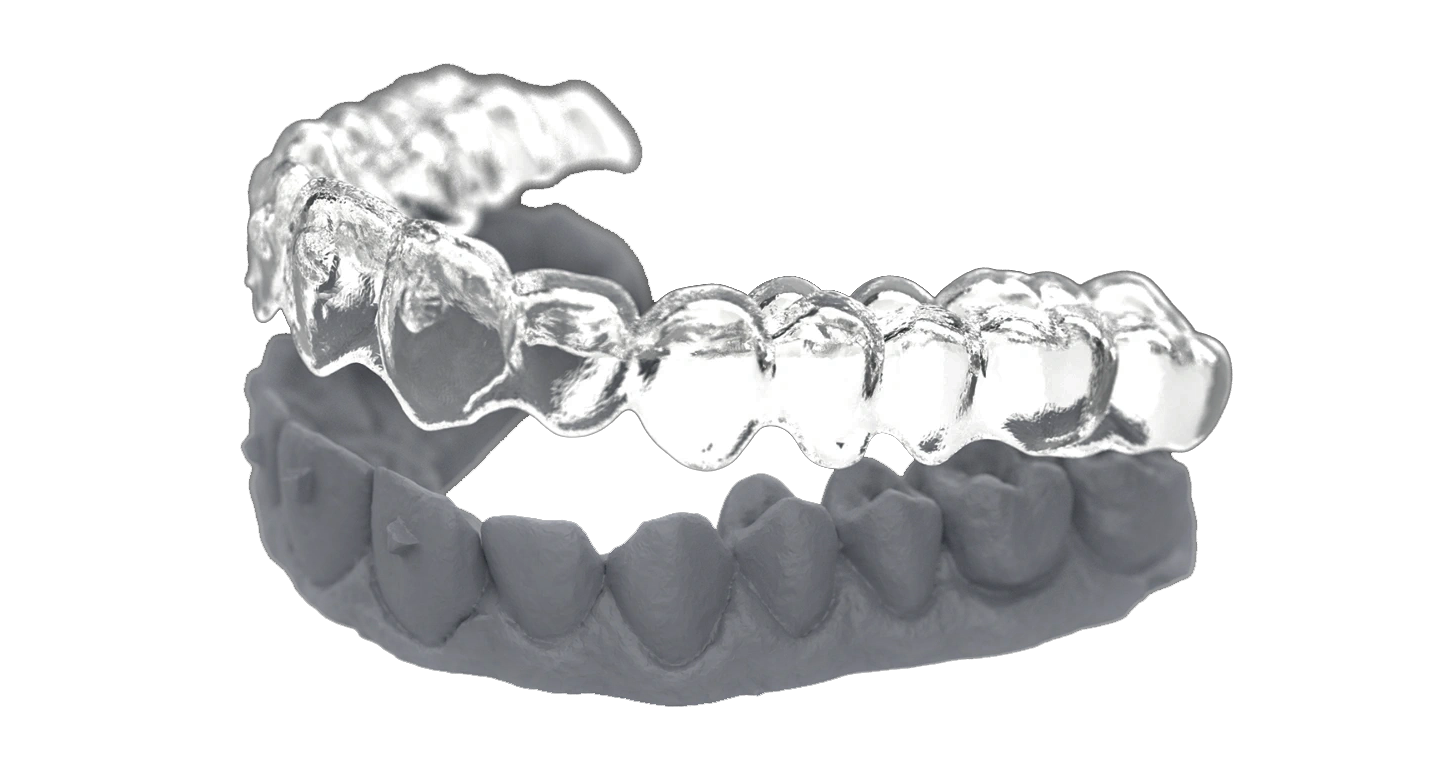Thermoforming a Thing of the Past?
A Brief Look into 3D Printing’s Role in Orthodontics
Thermoforming vs 3D Printing
The field of orthodontics is undergoing one of the most profound transformations in its history. For decades, thermoforming has been the gold standard for manufacturing clear aligners and retainers, offering a reliable and cost-effective approach to producing orthodontic appliances. However, as digital technology advances at an unprecedented rate, 3D printing is emerging as a game-changer, delivering levels of precision, efficiency, and customization that were previously unattainable. The question is no longer whether 3D printing will play a role in orthodontics—it already has a firm foothold—but rather whether thermoforming is on the brink of obsolescence.
This article takes a brief look into the strengths and limitations of both thermoforming and 3D printing, comparing their accuracy, efficiency, and long-term viability. We will also explore how recent innovations are paving the way for a fully digital orthodontic workflow and what this means for practitioners and patients alike.
The Time-Tested Approach: Thermoforming in Orthodontics

Thermoforming has long been the backbone of clear aligner and retainer manufacturing. The process is relatively simple: a thermoplastic sheet—typically PETG or polyurethane—is heated and vacuum-formed over a physical model of the patient’s dentition. Historically, this model was a plaster cast, though today, 3D-printed resin replicas are also common. Once the plastic sheet cools and hardens, the aligner is trimmed, polished, and fitted to the patient.
One of the primary advantages of thermoforming is its established track record. With decades of clinical use, its effectiveness has been thoroughly validated. The initial costs are relatively low since the necessary equipment—vacuum forming machines, trimming tools, and polishing stations—are significantly cheaper than industrial-grade 3D printing setups. Additionally, materials such as thermoplastic sheets are widely available, and their properties, including flexibility and thickness, are well-documented and understood by orthodontists. Another major advantage is the extensive body of clinical data supporting thermoforming, offering practitioners confidence in the predictability of outcomes.
However, thermoforming is not without its drawbacks. While effective, the process is inherently limited in precision. The accuracy of thermoformed aligners hovers around 100-150 microns, which, while sufficient in many cases, can result in lost fine details and slight inconsistencies. Furthermore, thermoformed aligners exert strong initial forces when first worn, which can cause significant discomfort for patients. Another major concern is material degradation—over time, thermoformed aligners lose elasticity and effectiveness, often requiring frequent replacements to maintain treatment progress.
Additionally, the reliance on physical models introduces inefficiencies. These models can degrade, warp, or become damaged, leading to variations in aligner fit and performance. The requirement for a separate physical model for each aligner stage also results in significant material waste, making thermoforming a less sustainable option compared to newer digital methods.
3D Printing: The Disruptive Force in Orthodontics
3D printing has transformed industries ranging from aerospace to healthcare, and orthodontics is no exception. Unlike subtractive manufacturing methods that carve away material to create a final product, 3D printing builds appliances layer by layer, allowing for exceptional precision and complete customization.
This technology offers unparalleled accuracy, with stereolithography (MSLA) and digital light processing (DLP) printers capable of achieving resolutions as fine as 10 microns. This level of detail is critical in orthodontics, where even the smallest deviations can impact treatment efficacy. Some 3D-printed aligners also utilize advanced shape memory polymers, which provide a consistent, gentle force over time, reducing patient discomfort and improving treatment predictability.
Perhaps the most significant advantage of 3D printing is its seamless integration into digital workflows. Since digital impressions and CAD software designs can be directly used to print aligners, there is no need for physical models, thereby eliminating a major source of error and material waste. Additionally, 3D printing enables batch production, allowing multiple appliances to be manufactured simultaneously, vastly improving efficiency. The scalability of 3D printing makes it an attractive option for both small orthodontic practices and large-scale dental labs.
Despite its many benefits, 3D printing does have some limitations. The initial investment is higher, with industrial-grade printers and specialized biocompatible materials carrying significant costs.
A Side-by-Side Comparison: Accuracy and Efficiency
In orthodontics, precision is paramount. Thermoforming, while effective, is limited by the accuracy of the physical model and the vacuum-forming process, which typically achieves 100-150 microns of precision. Additionally, because physical models can degrade and the forming process itself introduces slight variations, there is an inherent risk of inconsistency.
On the other hand, 3D printing far surpasses thermoforming in accuracy, with some high-resolution systems achieving precision as fine as 10 microns. This means that even the most intricate anatomical features can be accurately captured, leading to superior fit and treatment predictability. Studies have shown that 3D-printed aligners often provide a tighter, more precise fit, which can contribute to more effective and efficient tooth movement.
Efficiency is another area where 3D printing excels. Thermoforming requires multiple steps—printing or casting a physical model, heating and shaping the plastic sheet, trimming, polishing, and final fitting—each of which introduces labor, time, and potential for error. Conversely, 3D printing integrates seamlessly into a digital workflow, eliminating many manual steps. A single printer can produce multiple appliances simultaneously, dramatically reducing labor costs and production time. Moreover, since digital designs can be stored indefinitely, orthodontists can easily reprint appliances on demand, avoiding the need for physical storage and reducing material waste.
The Future: A Fully Digital Orthodontic Workflow
As technology continues to evolve, orthodontic practices are rapidly transitioning toward fully digital workflows. Intraoral scanners now allow for highly accurate digital impressions, eliminating the discomfort and potential distortions associated with traditional impression materials. These digital scans feed into CAD software, where precise design modifications can be made before the final appliance is printed.
Another major advantage of digital workflows is real-time treatment monitoring. AI-driven software can compare actual tooth movement with predicted models, allowing orthodontists to make adjustments proactively. This kind of real-time oversight was virtually impossible with thermoforming, where treatment monitoring relied heavily on manual observation and guesswork.
Beyond aligners, 3D printing is revolutionizing the production of customized orthodontic appliances, including brackets, occlusal splints, and retainers embedded with smart sensors. These next-generation devices open the door to personalized treatment options, with biofeedback-driven appliances that can adjust dynamically based on real-time forces.
For any orthodontic practice looking to stay ahead of the curve, embracing 3D printing is quickly becoming less of an option and more of a necessity.
Conclusion
The Inevitable Digital Shift
Thermoforming has long served the orthodontic community well, but its limitations are becoming increasingly evident in the face of rapid digital advancements. As 3D printing technology continues to mature, its superior accuracy, efficiency, and customization make it the clear choice for modern orthodontic practices. While thermoforming may continue to have a place in certain workflows, the transition to fully digital orthodontics is well underway.
This is why companies like InnovaShape are pioneering shape memory aligners and seamless 3D printing solutions. The industry is at the cusp of a new era. Orthodontists looking to remain competitive must recognize that the future is digital, and 3D printing is the driving force behind this transformation.
The time to embrace the future of orthodontics is now.



